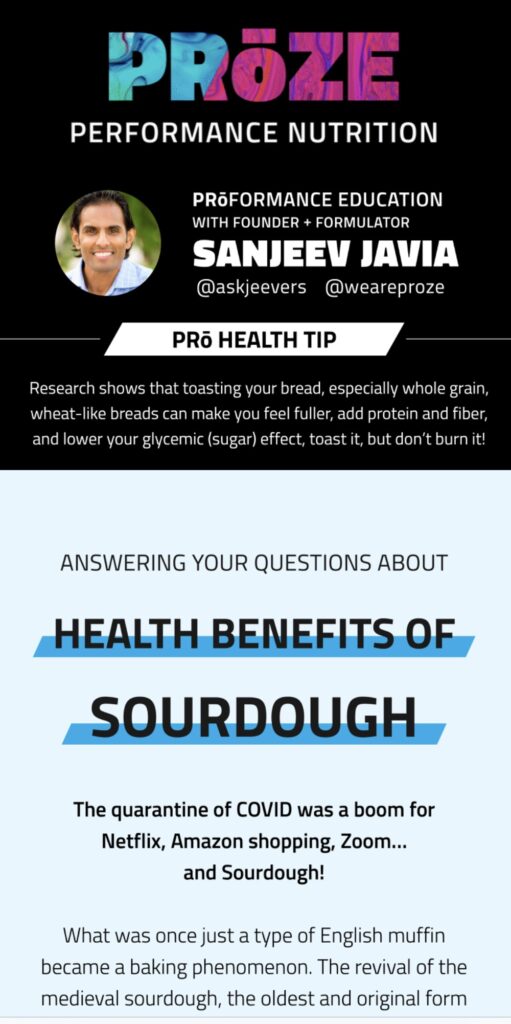The Battle Of The Butters!
Butter is back! Since the popularity of high-fat diets like Keto and food trends like putting butter in your coffee, butter has staged a massive comeback. Not only that, but we’ve also begun to understand that the devilish saturated fat, the fat found in butter, and Cholesterol are not as strongly linked to heart disease and weight gain as we thought. But these days, some people won’t eat just any kind of butter – they want grass-fed, a variety that promises more health benefits and better taste than my mom’s Land O’ Lakes…but is it worth the cost?
PRō Take Aways
- Grass-fed can still mean they use antibiotics and hormones
- Grass-fed butter has 500% more Conjugated Linolenic Acid (CLA)
- Grass-fed cows are best sources of Vitamin K2 (needed for Calcium absorption!)
Q: What is butter?
A: You get butter from churning (aggravating) milk, you keep doing that long enough and you’ll separate out the solid part (butter) and the liquids (butter milk). Butter has fats, protein, vitamins, and sugars (specifically lactose). Because all the liquid is gone and you’re left with fat, it all clumps together and becomes hard. You can make butter from any milk – cow, sheep, goat, buffalo, any animal that produces milk.
Q: What does Grass-Fed mean?
A: OK, this is tricky. How it is read or understood is that the animal has been given exclusively forage (grass) for their lifetime. But technically it can have 50% of their diet only grass fed. In addition, they need to have “access” to pasture, doesn’t mean they are on pasture. In addition, grass-fed does not identify if it was treated with antibodies or hormones. You can find products labeled AGA – American Grassfed Association, which require 100% forage diet, raised on a pasture, and never treated with antibiotics or hormones.
Q: What is the difference between Grass-Fed vs. Grain.
A: From a nutritional perspective, it’s the difference in amounts of certain nutrients:
Vitamin A, Vitamin E, Vitamin K2, Conjugated Linoleic Acid, Butyrate (which is a big deal, we’ll talk about that in another email), and Omega 3
Q: What about the amount of fat, calories, etc..?
A: It’s pretty much the same, both have around 100 calories, 11g of Fat, regular butter has a bit more Saturated Fat than Grass-fed, grass-fed has more unsaturated fat. The real difference comes from the nutrients and the way it tastes.
Q: So what are the big nutritional differences?
A: CLA is the biggest one. CLA, a type of fat, has been linked to superior heart health and reduction in inflammation, Grass-Fed Butter has 3-5x more CLA. Next Vitamin K2, which is critical for the absorption of Calcium and reduces arterial plaque formation, only cows consuming grass produced butter with significant amounts of K2. Vitamin A and E, are in higher amounts, not by a lot, but still higher. Everyone likes to talk about Omega 3 in grass-fed, and it is more, but it’s still less than 5% of Salmon, so doesn’t make much sense.
Q: Will this make a difference for my health?
A: If you eat a lot of butter, which I do, it will. I don’t cook with anything, but butter, and I spread it on a few things. CLA consumption is linked to lowering diabetes, cancer, heart disease, neurological disease, and pairing it up with Vitamin K2 is huge, so grass-fed butter is concentrated in both. The other nutrients I can get from anywhere else, so I’m not that concerned about them.
Q: Worth the cost?
A: When on sale, grass-fed is $0.30-0.40 more expensive. Land O Lakes is $3.28 for 8oz and KerryGold is $3.69. The CLA and K2 did it for me because I don’t eat a lot of dairy or meat, so butter is where I will get most of the CLA. I’d rather skimp on a few other things, and buy the more expensive grass-fed butter, plus I go through 1-2 of these a month, so it’s less than a $1.00.
Q: What are your choices?
A: I typically purchase the Kerrygold Salted (found everywhere – even Costco), then Anchor, and a new one has come out (which I buy their eggs), Vital Farms.




